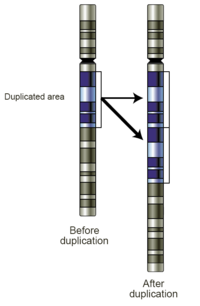
Microsatellite markers for the biogeographically enigmatic sandmyrtle (Kalmia buxifolia, Phyllodoceae: Ericaceae)
Sign Up to like & getrecommendations! Published in 2019 at "Applications in Plant Sciences"
DOI: 10.1002/aps3.11267
Abstract: Premise Microsatellite markers were developed for sandmyrtle, Kalmia buxifolia (Ericaceae), to facilitate phylogeographic studies in this taxon and possibly many of its close relatives. Methods and Results Forty‐eight primer pairs designed from paired‐end Illumina MiSeq… read more here.
Keywords: markers biogeographically; kalmia; kalmia buxifolia; sandmyrtle kalmia ... See more keywords

Development and characterization of microsatellite markers for Antennaria corymbosa (Asteraceae) and close relatives
Sign Up to like & getrecommendations! Published in 2019 at "Applications in Plant Sciences"
DOI: 10.1002/aps3.11268
Abstract: Premise The genus Antennaria has a complex evolutionary history due to dioecism, excessive polyploidy, and the evolution of polyploid agamic complexes. We developed microsatellite markers from A. corymbosa to investigate genetic diversity and population genetic… read more here.
Keywords: development characterization; characterization microsatellite; antennaria; antennaria species ... See more keywords

Microsatellite markers for Saussurea polylepis (Asteraceae), a vulnerable continental island species endemic to Korea
Sign Up to like & getrecommendations! Published in 2019 at "Applications in Plant Sciences"
DOI: 10.1002/aps3.11270
Abstract: Premise Nuclear microsatellite markers were developed for Saussurea polylepis (Asteraceae), a vulnerable species with very limited distribution in a few southwestern continental islands of the Korean peninsula, in order to facilitate future population genetic studies.… read more here.
Keywords: markers saussurea; saussurea polylepis; polylepis asteraceae; asteraceae vulnerable ... See more keywords

Fourteen polymorphic microsatellite markers for the widespread Labrador tea (Rhododendron groenlandicum)
Sign Up to like & getrecommendations! Published in 2019 at "Applications in Plant Sciences"
DOI: 10.1002/aps3.11306
Abstract: Premise Microsatellite markers were developed for Labrador tea (Rhododendron groenlandicum, Ericaceae) to facilitate downstream genetic investigation of this species and the extremely closely related, circumboreal Rhododendron subsect. Ledum. Methods and Results Forty‐eight primer pairs were… read more here.
Keywords: rhododendron groenlandicum; fourteen polymorphic; labrador tea; rhododendron ... See more keywords

Microsatellite markers for the endangered Puya raimondii in Peru
Sign Up to like & getrecommendations! Published in 2019 at "Applications in Plant Sciences"
DOI: 10.1002/aps3.11308
Abstract: Premise Microsatellite primers were developed for Puya raimondii (Bromeliaceae), an endangered species distributed in the Andean Mountains of Bolivia and Peru. Methods and Results Genome skimming of P. raimondii, P. macrura, and P. hutchisonii resulted… read more here.
Keywords: raimondii; puya raimondii; endangered puya; markers endangered ... See more keywords

Development of 16 microsatellite markers for the Korean endemic Vicia hirticalycina (Fabaceae)
Sign Up to like & getrecommendations! Published in 2018 at "Applications in Plant Sciences"
DOI: 10.1002/aps3.1170
Abstract: Premise of the Study Vicia hirticalycina (Fabaceae) is a narrowly endemic species restricted to mountain valleys of southern Korea. To investigate its fine‐scale genetic diversity and differentiation in Korea, we developed polymorphic microsatellite markers. Methods… read more here.
Keywords: vicia hirticalycina; microsatellite markers; hirticalycina fabaceae;

Development of microsatellite markers for the resin‐yielding, non‐timber forest product species Boswellia serrata (Burseraceae)
Sign Up to like & getrecommendations! Published in 2018 at "Applications in Plant Sciences"
DOI: 10.1002/aps3.1180
Abstract: Premise of the Study Boswellia serrata (Burseraceae) is an economically important aromatic, gum‐resin–yielding, non‐timber forest tree species. Microsatellite markers were developed for B. serrata for the first time to study genetic diversity and population structure.… read more here.
Keywords: boswellia serrata; serrata burseraceae; yielding non; resin yielding ... See more keywords

Development, characterization, and cross‐amplification of microsatellite markers for Psammosilene tunicoides (Caryophyllaceae)
Sign Up to like & getrecommendations! Published in 2018 at "Applications in Plant Sciences"
DOI: 10.1002/aps3.1199
Abstract: Premise of the Study Psammosilene tunicoides (Caryophyllaceae) is a narrowly distributed and endemic plant species in southwestern China. The overexploitation of natural P. tunicoides has led to the destruction of many populations. Population and genetic… read more here.
Keywords: cross amplification; characterization cross; development characterization; psammosilene tunicoides ... See more keywords

Advances in genotyping microsatellite markers through sequencing and consequences of scoring methods for Ceratonia siliqua (Leguminosae)
Sign Up to like & getrecommendations! Published in 2018 at "Applications in Plant Sciences"
DOI: 10.1002/aps3.1201
Abstract: Premise of the Study Simple sequence repeat (SSR) or microsatellite markers have been used in a broad range of studies mostly scoring alleles on the basis of amplicon size as a proxy for the number… read more here.
Keywords: variation; genotyping microsatellite; advances genotyping; microsatellite markers ... See more keywords

Microsatellite markers for the prized matsutake mushroom (Tricholoma matsutake, Tricholomataceae)
Sign Up to like & getrecommendations! Published in 2018 at "Applications in Plant Sciences"
DOI: 10.1002/aps3.1202
Abstract: Premise of the Study Novel and cost‐effective microsatellite markers were developed to explore the population genetics, biogeographic structure, and evolutionary history of the prized Euro‐Asian wild edible ectomycorrhizal fungus Tricholoma matsutake (Tricholomataceae). Methods and results… read more here.
Keywords: tricholoma matsutake; matsutake; matsutake tricholomataceae; tricholoma ... See more keywords

Development of microsatellite markers for a monotypic and globally endangered species, Glyptostrobus pensilis (Cupressaceae)
Sign Up to like & getrecommendations! Published in 2019 at "Applications in Plant Sciences"
DOI: 10.1002/aps3.1217
Abstract: Premise of the Study Microsatellite markers were developed to facilitate studies of genetic diversity and structure in Glyptostrobus pensilis, a critically endangered and monotypic conifer species. Methods and Results Using restriction site–associated DNA sequencing (RAD‐Seq),… read more here.
Keywords: monotypic globally; markers monotypic; glyptostrobus pensilis; development microsatellite ... See more keywords